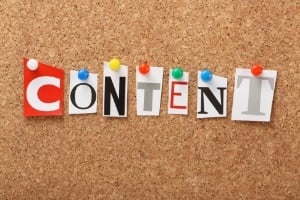It can be difficult pinpointing where a lead is in the Buyer's Journey. It can even be difficult pinpointing when a stage in the Buyer's Journey ends and another begins. But now, HubSpot has a solution. With the new timeline-style model of the Buyer's Journey, you can more easily identify the boundaries of each stage, which stage a potential buyer is at, and the content best aligned to that stage's needs.

The Buyer's Journey is the active research process a lead goes through before making a purchase. It is composed of three stages: Awareness, Consideration, and Decision.
Here is the classic Buyer’s Journey model, using a person with strep throat searching for a clinic as an example:
Here is the same Buyer’s Journey represented in the timeline model:
The most significant change within the timeline model is the addition of “conclusion points” between each stage, which represent the moment the buyer makes a determination based on their research. These points act as boundaries between each stage and successfully reaching one will cause the buyer to progress into the next stage.
Let’s break down each part of the timeline model in chronological order.
1. Symptom Identified (Conclusion Point)
Our first conclusion point represents the moment that the buyer becomes aware of a condition or need our company can solve. It is usually easier to identify the second conclusion point, the problem this journey is centered on, first, and then consider what signs or symptoms might be present for a buyer with that problem.
In this case, the problem is strep throat, and potential symptoms include sore throat, fever, and red spots in the mouth. Typically, there are multiple symptoms to consider, and it can be useful to list all of them within your timeline. You will likely want to develop content to address research involving all potential symptoms. Starting with the most common symptom or "pain point" is a good way to approach this.
As another example, if a tech upgrade company is trying to target buyers with a problem of out-of-date hardware, symptoms of the buyer may include slow computers, software incompatibility, missing security features, low productivity, high customer wait time, and poor employee morale.
Free Guide: How to Create Video to Increase Engagement
2. Awareness (Research Stage)
During the Awareness research stage, the buyer tries to learn more about the symptom they are experiencing and what is causing it. Possible phrases the buyer with a sore throat might search include:
- Why is my throat sore
- How to soothe sore throat
- How long does sore throat last
- How to tell if I have strep throat
- Strep throat symptoms
- Strep throat vs laryngitis
- Can I get strep without tonsils
Knowing what information a buyer might search for can help you plan the type of content to create. This will increase the likelihood that your website will appear in their search results and provide the buyer with the information they need to realize they have the type of problem your business can assist with.
3. Problem Identified (Conclusion Point)
The second conclusion point is the moment that the buyer recognizes the problem that is causing their symptoms. As mentioned, it is usually helpful to label this point before backtracking to name symptoms. In this case, the problem we are focusing on is strep throat.
When determining the problem your buyer’s journey focuses on, be sure to keep it in the perspective of the buyer, not your company's. Consider the goals your customers value and how your solution supports those goals.
Try to keep your thinking in alignment with your buyer personas since, after all, this is their journey — it needs to be in language they use about what matters to them, not what matters to us in a way we'd say it.
4. Consideration (Research Stage)
At this point, since the buyer has successfully identified their problem, they will now do research to decide if and how they can solve it. They are not yet ready to consider specific brands but are looking for solution types.
Your solution type is typically a short phrase that could also be used to describe a direct competitor. For example, Burger King's solution type wouldn't be "Whoppers" — but it could be "Fast food burgers." Our hypothetical clinic has the solution type “walk-in clinic.”
It is helpful to identify your company’s solution type as well as other solution types that your buyer might consider. This is especially important if your solution type is less known than other solution types since buyers might not be aware of enough to search for it directly. You can use this information to create content that catalogues and compares the options the buyer is considering (but remember to keep this content factual and unbiased — you don’t want to misinform your buyer or create doubt in the accuracy of your content).
The buyer in the journey to our hypothetical clinic may search for:
- How to cure strep throat
- Strep throat medicine
- Home strep treatments
- Is strep throat dangerous?
- Should I go to the doctor for strep throat?
- Clinic vs urgent care
- Urgent care vs regular doctor
- Can teladoc diagnose strep throat
- Are medical clinics for emergencies?
5. Solution Type Identified (Conclusion Point)
For our third conclusion point, the buyer decides that your company’s solution type is the best option for them. After reaching this point, they should be ready to consider specific vendors offering this solution, perhaps even side-by-side. For our example, this happens when the buyer determines they want to go to a “walk-in clinic.”
If our hypothetical clinic had selected a broader phrase as their solution type, such as “medical professional,” the buyer would still need to choose between all medical professional options (a walk-in clinic, hospital, private practice, virtual service, etc.) with each option having multiple vendors to consider. It would be difficult for the buyer to compare the specific vendors side-by-side without understanding the difference between the more specific solution types — which means they have not finished their research and aren't at this conclusion point yet.
6. Decision (Research Stage)
Now that the buyer knows the type of solution they want to pursue, they'll begin to search for and compare specific vendors for that solution type. This is the first time in the buyer’s journey that the buyer wants to engage in content that refers to specific brands.
The most important type of content to have for this stage is information on your company, your value proposition, the services you offer, and any other elements your buyer is likely to consider when choosing between vendors. If you create any content that compares vendor options, be sure to still maintain factual and unbiased messaging as much as possible. Remember, some buyers are be a better fit for a competitor and misaligning them could result in a negative customer experience with your company.
If our hypothetical clinic were called MD Express, their buyer may use a search engine or review the company website to learn:
- Walk-in clinics near me
- Best medical clinics in [area]
- MD Express vs Medi-Quick
- Does MD Express take Blue Cross insurance
- MD Express services
- MD Express reviews
- MD Express wait time
- MD Express healthgrades
- MD Express doctors
7. Vendor Identified (Conclusion Point)
Our final conclusion point is the moment that the buyer decides they would like to work with your business. The buyer is no longer looking into other brands. For MD Express, a buyer reaching the “Vendor Identified” conclusion point will be ready to go to the clinic and engage in services.
A buyer who has reached this point may make a touchless purchase, engage with your sales team, or consume content comparing offerings from your company. At this point, any additional research they do will be within the realm of comparing your specific company’s offerings.
After the Timeline and Purchase
After the traditional Buyer’s Journey, I like to imagine an additional “Purchase” research stage, with a final conclusion point: Transaction Complete. Within HubSpot, this part of the process is typically tracked using a deal pipeline, with individual deal stages providing more granular context on the sale's progress.
Depending on the structure of your business, this may be a process your buyer goes through multiple times — it can occur in instances involving additional products/services, contract renewals, or winback opportunities.
Remember, the buyer's journey is just that: a journey. Take your leads by the hand and help them reach their destination and, hopefully, it'll be your company or product.




